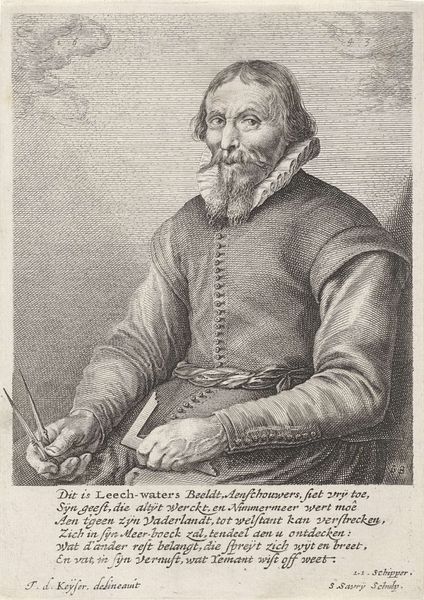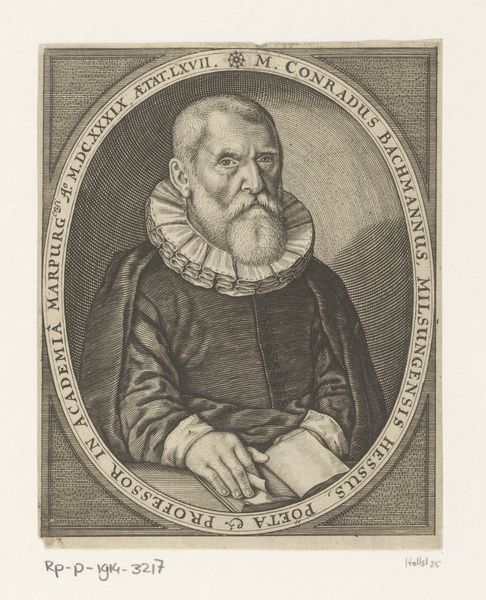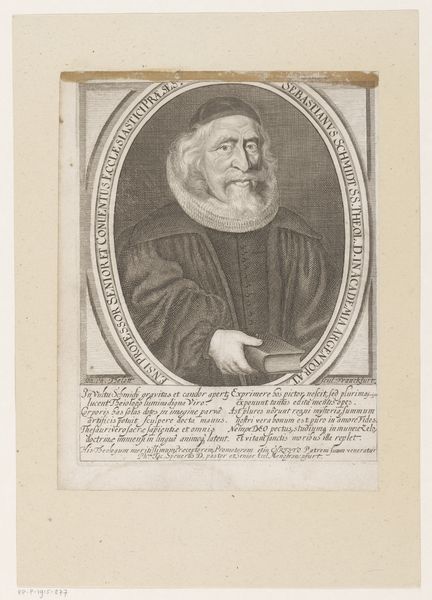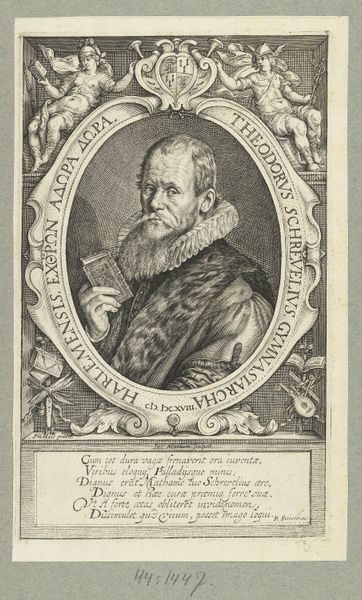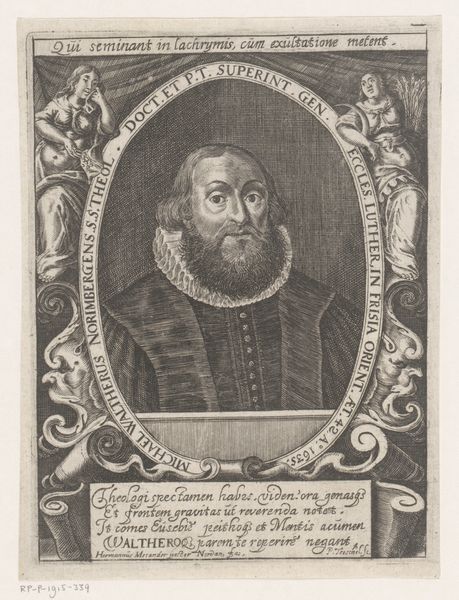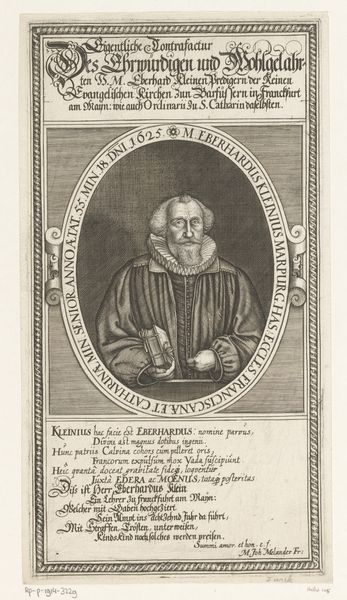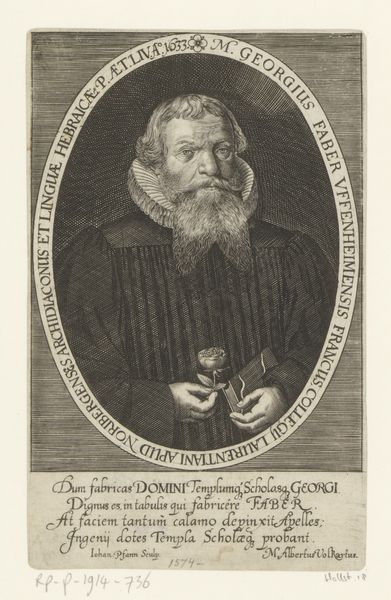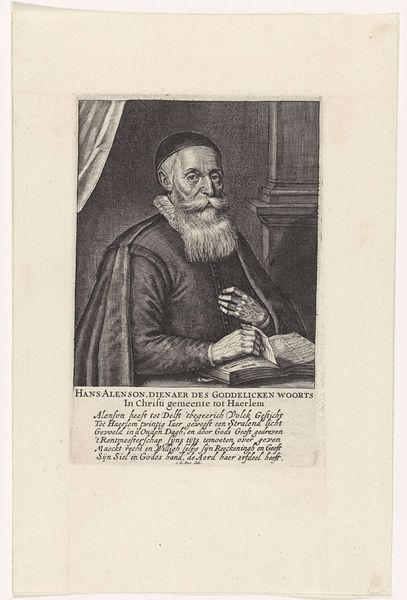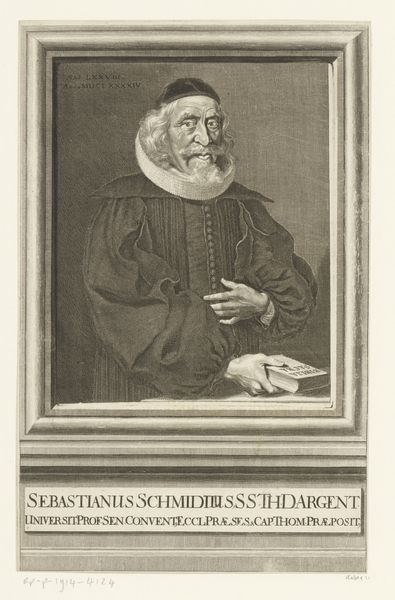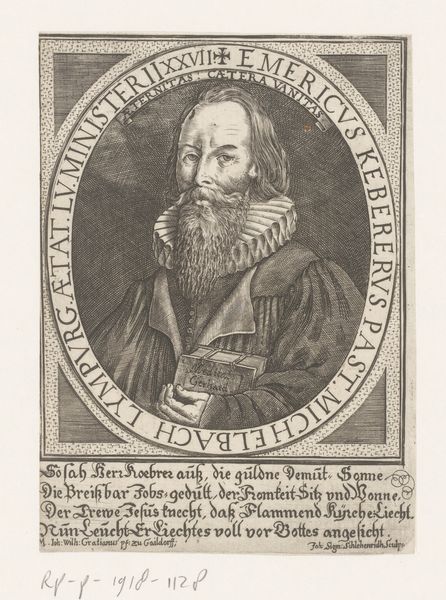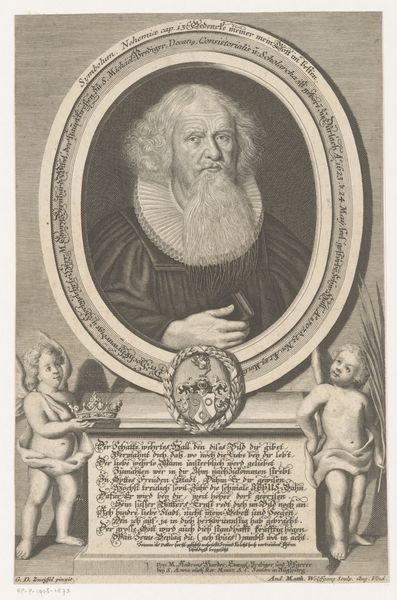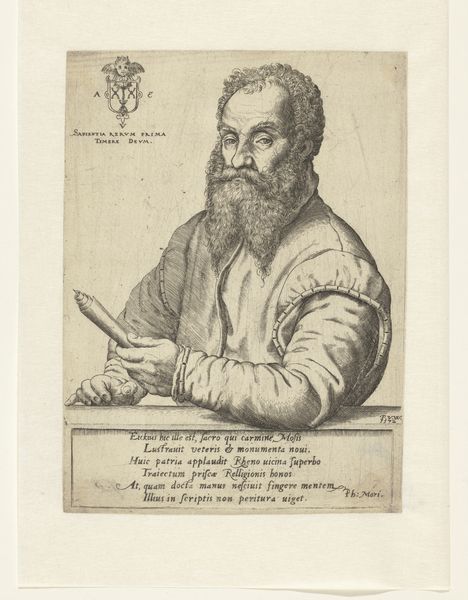
print, engraving
#
portrait
#
aged paper
#
baroque
# print
#
old engraving style
#
portrait drawing
#
engraving
#
realism
Dimensions: height 178 mm, width 125 mm
Copyright: Rijks Museum: Open Domain
Editor: This is a fascinating engraving from the Rijksmuseum, titled "Portret van Jan Adriaensz Leeghwater." It's from sometime between 1684 and 1743. The intricate lines create such a formal, almost austere feel. What symbolic significance do you see in the tools he's holding? Curator: The tools are everything. Observe the compass and the square – these aren’t just instruments for measurement; they’re symbols of a man deeply connected to geometry, engineering, and creation. This recalls associations of the compass with divine creation in the Medieval era. Holding those tools, Leeghwater embodies rational thought, progress, and the ambition to shape the world. Don't you think? Editor: Absolutely! The text below the image – is that part of the original artwork? Curator: Yes, and it is quite insightful. The inscription, which translates to something like "This is Leeghwater’s image," speaks to his tireless work to better his homeland, reflects how images were once integral to constructing the legacy of historical figures, to cement their place in the cultural memory. This idea is then reinforced in the tools he holds, as this print memorializes a life dedicated to measurable impact, quite literally. How does knowing that influence your perspective on the image? Editor: That’s really impactful. Knowing the inscription is part of the artwork enhances my appreciation of the artist's work. The tools he holds now serve as metaphors for problem-solving. Curator: Indeed. And within a broader historical context, recall the importance of prints in disseminating knowledge. Engravings like this facilitated the circulation of Leeghwater’s image and, consequently, his ideas about land reclamation and hydraulic engineering to a wider audience. Thus, solidifying not just the *man*, but *progress* in cultural consciousness. Editor: This artwork speaks to something grander than one man's lifetime. Thank you! Curator: My pleasure! Thinking about the weight and complexity of imagery is important.
Comments
No comments
Be the first to comment and join the conversation on the ultimate creative platform.
